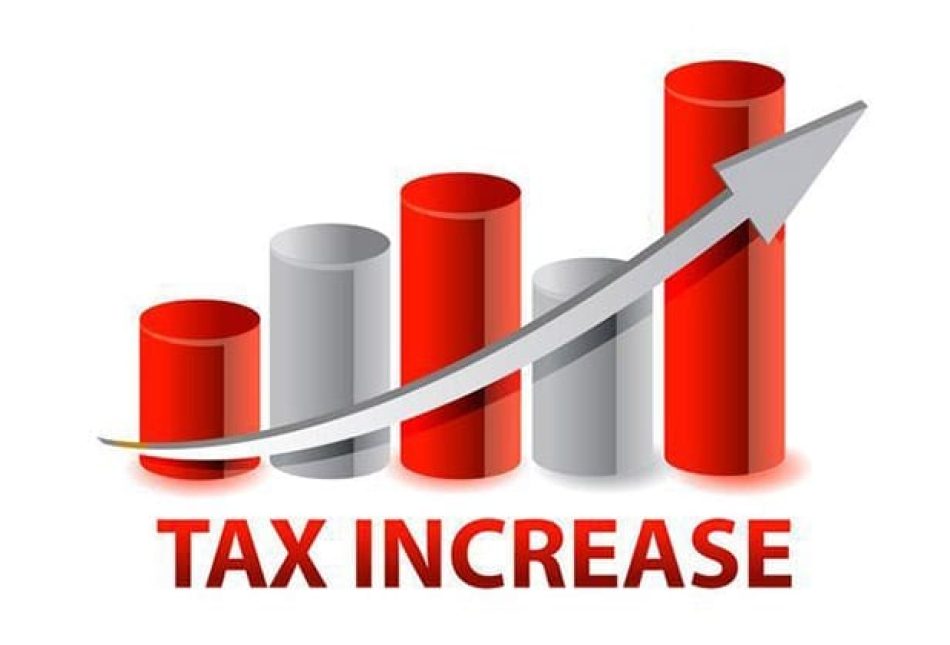Research
post
Effective Income Tax Rates in NM on The Way Up

Effective rates of tax on income have actually gone up rather than down since beginning of Richardson Administration.
Did you know that the effective rate of tax on individual income has actually gone up rather than down since the beginning of the Richardson Administration? We are tricked into thinking that individual income tax rates have gone down if we look only at that tax in isolation.
But federal and state taxes are inextricably intertwined. And we can calculate effective tax rates with precision. In particular, we calculate the effective rate of tax on individual income by assessing the interdependence of New Mexico’s gross receipts tax, its individual income tax and the federal income tax.
We begin with New Mexico’s gross receipts tax (GRT). When an entrepreneur sells her service, she has to pay tax on the entire amount received even though some of it goes to cover expenses. Fortunately, she does not have to pay federal or state income tax on the amount of the GRT payment. The gross receipts tax rate has gone up by one-half percentage point or more in most New Mexico jurisdictions; and she has to pay that increase on her total receipts, not just on her income net of expenses. For example the gross receipts tax rate has gone up by 15/16 of one percent in Albuquerque. The more expenses she has relative to income, the more burdensome is the GRT. High overhead service providers, such as Doctors, have been particularly hard hit by this tax [1].
Next consider the state individual income tax. Its specific rate has been reduced from 8.2 percent to 6.0 percent. It is deductible on both the state and federal individual income tax returns.
The federal income tax depends on how much state income tax is deducted and how much gross receipts tax is expensed as well as other deductions, business expenses and exemptions. The taxpayer’s social security and Medicare “contributions” do not benefit from the state income tax deduction; but (thankfully) they are not applied to the gross receipts tax payment.
Here is an example of the bottom line for a taxpayer. Say that her taxable income is 50 percent of her total receipts. Give our entrepreneur a somewhat modest income: she is in the 25 percent federal tax bracket, 6 percent New Mexico tax bracket, makes “contributions” to social security and Medicare at the rate of 15.3 percent and has gross receipts that are twice her taxable income. In that case her overall effective rate of tax on income is 52 percent [2]! Compare that to an equivalent entrepreneur in Texas: her effective rate of tax is 40 percent. Now you can see how the gross receipts tax destroys jobs in New Mexico. Maybe we should call our gross receipts tax the “Texas – Colorado – Arizona Economic Development Initiative.”
Let’s say our entrepreneur wanted to work harder so as to earn another $1,000 net of tax. With an effective income tax rate of 52% she would have to increase her taxable income by $2,083.33; and she would have to increase her total receipts by $4,166.67. Similarly, she would give up only $1,000 net of tax by taking it easier and reducing her gross sales by $4,166.67. Or, if she moved to Texas, she would only have to increase her taxable income by $1666.67 and gross receipts by $3,333.33 to keep her extra $1,000 net of tax.
And at what point does it become permissible to ask about off-market means of avoiding these high tax rates? There is probably a large off-market sector – the incentives to break the law are huge. A thousand dollars earned net of expenses is rewarded with a thousand dollars net of tax. – quite a difference from having to earn $2,083 before tax.
The following table documents the effective income tax rates for a taxpayer in the 25% federal tax bracket and the 6% state tax bracket for varying taxable incomes as a percent of total receipts:
| Income as percent of gross receipts\year | Effective Tax Rate2005 | Effective Tax Rate2004 | Effective Income Tax Rate Increase |
|
20%
|
63.26%
|
61.04%
|
2.22%
|
|
30%
|
57.02%
|
55.72%
|
1.31%
|
|
40%
|
53.90%
|
53.06%
|
0.85%
|
|
50%
|
52.03%
|
51.46%
|
0.57%
|
|
60%
|
50.78%
|
50.40%
|
0.39%
|
|
70%
|
49.89%
|
49.64%
|
0.26%
|
|
80%
|
49.22%
|
49.07%
|
0.16%
|
|
90%
|
48.70%
|
48.62%
|
0.08%
|
|
100%
|
48.29%
|
48.27%
|
0.02%
|
Our own Matt Mitchell has documented other increased New Mexico taxes in detail (see https://www.riograndefoundation.org/tops/tax_legislation_guide.htm). Now that we know effective rates of tax on income are going up too, how can we claim to be “open for business” in New Mexico? Aren’t effective income tax rates of 50 percent or more for someone of modest income high enough? If not, how high is enough? Enough already!
Since the effective rate of tax on each dollar earned is much higher than is usually thought in discussions of state taxes, the adverse effects of GRT “pyramiding” for New Mexico are a much worse than is usually thought. Let’s get spending under control, so that we can reduce the gross receipts tax. Let’s open New Mexico for business.
1 A harmful and unfair law was passed and signed in 2004. For details see the Foundations paper: Treat Sick Tax Policy: First, Undo the Harm from 2004 Legislature of January 9, 2005.
2 The algebra used to calculate the effective tax is easy but tedious. The Foundation has a spreadsheet available to calculate effective rates of tax on income. The user enters taxable income as a percent of total receipts, federal tax bracket, state tax bracket and local gross receipts tax rate. If you would like a copy of the spreadsheet, just ask.
